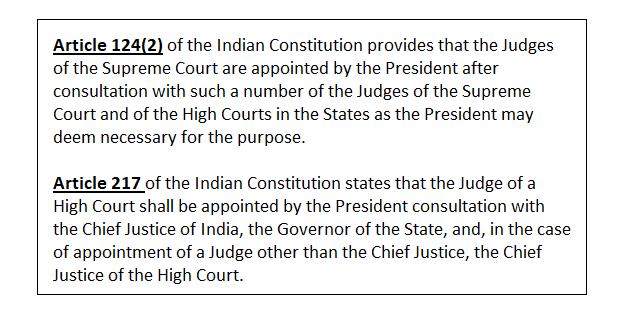Appointment of Supreme Court Judges
Context:
Appointment of Supreme Court Judges: Swearing-in of the nine new judges of Supreme Court
Key Highlights:
- Nine new Supreme Court judges were administered their oaths of office by Chief Justice NV Ramana. It is for the first time in the history of Supreme Court that nine judges took oath of office at one go.
- With the swearing-in of the nine new judges, the strength of the Supreme Court has now increased to 33, including the CJI, out of the sanctioned strength of 34.
- Three of them were women judges. One of them, Justice B.V. Nagarathna, is slated to be Chief Justice of India in 2027. With this addition, the apex court will have four women judges for the first time.
- It was the first time the Supreme Court allowed a live telecast of the ceremony.
Contents
Appointment of Supreme Court Judges
According to the Constitution of India, the following are the rules for appointment of the Supreme court Judge.
- Every Judge of the Supreme Court shall be appointed by the President by warrant under his/her hand and seal after consultation with such of the Judges of the Supreme Court and of the High Court in the States as President may deem necessary for the purpose and shall hold office until he attains the age of 65 years.
- Supreme Court held that the consultation with Chief Justice is not binding on the President. But the Court held that consultation should be effective.
- In Supreme Court Advocates-on-Record Association vs Union of India 1993, the Court states that the view of the CJI is binding on the President, the Court also held that while advising the President CJI is expected to consult two of the senior-most Judges.
- CJI is the sole authority to initiate the process of appointment of Judges of the Supreme Court. In case of conflict of opinion between CJI and President, the view expressed by CJI will have a primary.
- In July 1998, the President sought the court’s opinion on core issues relating to the appointment of Apex Court Judges and transfer of High Court Judges.
- The 11th Presidential Reference sought clarification on certain doubts over the consultation process to be adopted by the Chief Justice of India as stipulated in the 1993 case relating to judges appointment and transfer opinion.
- The crux is as follows:
- In judicial appointments, it is obligatory for the President to take into account the opinion of the CJI.
- The opinion of the CJI is binding on the Government. The opinion of the CJI must be formed after due consultation with a collegium of at least four senior-most judges of the Supreme Court.
- Even if two judges give an adverse opinion, then he should not send the recommendation to the Government.
Eligibility Criteria for Supreme Court Judge
The Indian Constitution says in Article 124 [3] that in order to be appointed as a judge in the Supreme Court of India, the person has to fit in the following criteria:
- He/She is a citizen of India and
- has been for at least five years a Judge of a High Court or of two or more such Courts in succession; or
- has been for at least ten years an advocate of a High Court or of two or more such Courts in succession; or
- is, in the opinion of the President, a distinguished jurist.
Collegium System:
- It is the system of appointment and transfer of judges that has evolved through judgments of the Supreme Court, and not by an Act of Parliament or by a provision of the Constitution.
- There is no mention of the Collegium either in the original Constitution of India or in successive amendments.
- The Supreme Court collegium is headed by the CJI and comprises four other senior most judges of the court.
- A High Court collegium is led by its Chief Justice and four other senior most judges of that court.
Articles related to Appointment of Supreme Court Judges
- Article 124(2)of the Indian Constitution provides that the Judges of the Supreme Court are appointed by the President after consultation with such a number of the Judges of the Supreme Court and of the High Courts in the States as the President may deem necessary for the purpose.
- Article 217of the Indian Constitution states that the Judge of a High Court shall be appointed by the President consultation with the Chief Justice of India, the Governor of the State, and, in the case of appointment of a Judge other than the Chief Justice, the Chief Justice of the High Court.
Evolution of the Collegium System in Judiciary:
First Judges Case (1981): It declared that the “primacy” of the Chief Justice of India (CJI)s recommendation on judicial appointments and transfers can be refused for “cogent reasons.”
The ruling gave the Executive primacy over the Judiciary in judicial appointments for the next 12 years.
Second Judges Case (1993): Supreme Court introduced the Collegium system, holding that “consultation” really meant “concurrence”.
It added that it was not the CJI’s individual opinion, but an institutional opinion formed in consultation with the two senior-most judges in the SC.
Third Judges Case (1998): Supreme Court on President’s reference expanded the Collegium to a five-member body, comprising the CJI and four of his senior-most colleagues.
Source: The Hindu
You can find many articles on CONSTITUTION and JUDICIARY (part of GS II) in our website. Go through these articles share with your friends and post your views in comment section.



